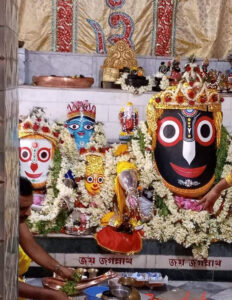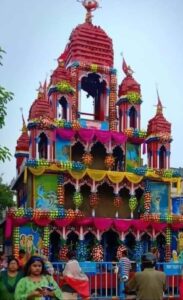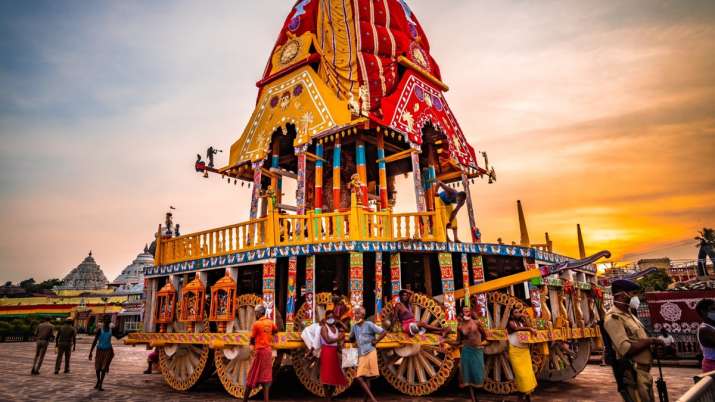One of the worst jolts of the pandemic on big festivals is said to have been felt in the country’s eastern region.
This year the Puri Rath Yatra festival was celebrated on the 12th of July, 2021. Due to the COVID-19 protocols, the Odisha state government has imposed a curfew for the whole duration of the festival.
Due to the limited symbolic celebration this year, the tourism industry has suffered huge losses. Hotels and home-stays in Puri are facing unprecedented drop in business. Cultural programmes during the festival, like dance performances,concerts and local folk performances were called off resulting in tremendous pressure on artists and event organisers. Added to these troubles, the ongoing storms forming continuously due to the low-pressure belt in the Bay of Bengal have dampened the festive spirits further.

A similar situation is prevalent in Mahesh, Srirampore where the chariot festival is celebrated for the last 625 years including 2021 making it the second oldest worldwide. In addition to that, a grand fair is organised that goes on for a month on the temple grounds. This fair is the largest in the state of West Bengal and has a history that goes back to the 14th-century era. Nearly three lakh people come and visit the fair each year. This fair is mentioned in the famous Bengali novel Radharani authored by Bamkim Chandra Chattopadhyay.
Tamal Kumar Adhikary is a 44 year old priest and Shebaik of Mahesh Jagannath Mandir who is said to be a descendant of sage Shri Dhrubananda Brahmachari who established the mandir in 1396. Adhikary says, “The difference between Puri and Mahesh temples is that the idols are changed and repainted every 19 years in Puri Dham whereas the idol in Mahesh, sculpted in 1396, is repainted every year with colours made from natural plants, flower extracts and seeds. Before the Rath Yatra, a ceremony known as Snanyatra meaning a bathing ceremony takes place where the idols are bathed with water from Ganga river and milk till evening. The next week before the yatra begins, the idol of Jagannath is placed on the highest tier of the Ratha. The idols of Balaram and Subhadra are also placed. A Neel Kantha bird is brought and made to sit at the topmost shikhara of the chariot. When the bird flies away the procession starts”.
After the pandemic hit the chariot remains chained and locked. Both the original chariot and temple don’t exist anymore as it was washed out during the change of the river’s course. The modern temple was constructed by Nayachand Mallick of Pathuriaghatas, Kolkata in 1755.

Similarly, the current chariot is the tallest in the world measuring 50 feet in height and is made of steel frame and wooden scaffolding. It was built by the Martin Burn company during British rule.
Coming to the present pandemic situation, both the festival and the grand fair have been called off, resulting in huge loss of business. This year too all the rituals will be done inside the temple. The idols will be transferred to the kitchen that has been converted into a temporary Mausi Maa temple and the Narayan sheilas of all the 3 Gods and Goddesses will be moved to the Ardhashini Devi temple by priests on the day of the Rath yatra. The Narayan Sheilas would be brought back on the 9th day that is the return journey (Ulto Rath). On that same day, the idols would be brought back to the sanctum sanctorum. All the tasks and rituals will be performed maintaining social distancing and following COVID-19 protocols. Darshan and public gathering will not be allowed. The proceedings would be telecast live. Also, the distribution of the Mahabhog or Prasadam will be done through a token system as it was done the previous year though it will be very limited this time.
Not only Mahesh, there are also so many ancient Rath Yatras and related fairs that used to be held in West Bengal each year including Guptipara, Jangipara, Mahishadal and Rajbalhat, all of those approximately 300 years old.
In Kolkata, many Bengali Hindu families celebrate Ratha Yatra in contrast to those who worship the Durga idols in their homes. Central Kolkata’s Bowbazar area used to be called “Rotho para” due to its grandeur and variety in this rhariot festival. But things are different now. “Due to pandemic we didn’t arrange a rally this year too”, said Ranti Dutta of Jadunath Dutta Bari whose chariot festival is approximately 265 years old.
” This year we will not worship our main traditional large brass chariot which we used to do in the premises of our house but we will worship a smaller one at the balcony only with the closed family members to maintain the tradition”, said Subrata Pramanik of Pramanik bari whose ancestral chariot is also more than 300 years old.
.


2 Comments
Fantastic survey, summary and descriptive essay❤️ love
Very good article in simple language. Keep it up…👍👍👍